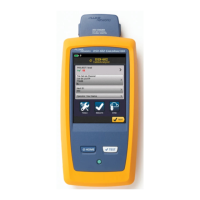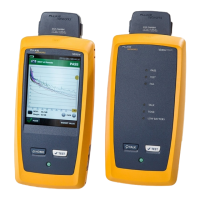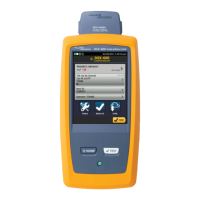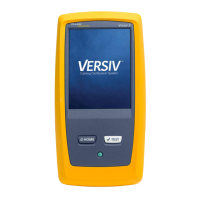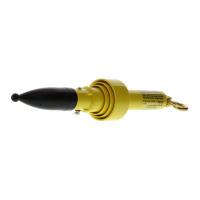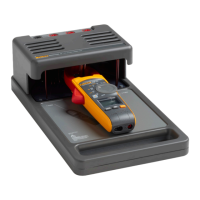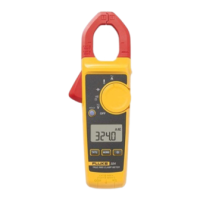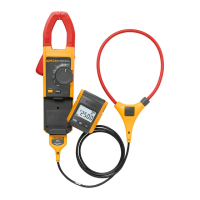DSP-4000 Series
Users Manual
7-12
FEXT and ELFEXT
FEXT (far-end crosstalk) is the difference between the amplitude of a far end test
signal applied to one wire pair and the resulting crosstalk at the near end on a
different wire pair. Like NEXT, FEXT is expressed in decibels, and higher FEXT
values correspond to better cable performance.
ELFEXT (equal level far-end crosstalk) is the difference between the FEXT and
the attenuation of the disturbed wire pair. Like ACR, ELFEXT is a type of signal-
to-noise ratio that indicates the transmission quality of a cable link. The name
"Equal Level FEXT" refers to the fact that all FEXT signals are attenuated equally.
Figure 7-8 illustrates this important difference between NEXT and FEXT.
Crosstalk signals received far from a transmitter contribute little to NEXT because
they are attenuated over a long distance. But all FEXT signals are attenuated by
the same amount, so they all contribute equally to crosstalk at the far end.
Because all FEXT signals travel the same distance, they tend to add up in phase.
This means that the signals always add up to a worst-case FEXT value.
There can be a difference between the NEXT and FEXT of a link, particularly in
the connecting hardware. This difference is due to the nature of the capacitive and
inductive currents that cause crosstalk. At a signal source (the near end) these
currents can subtract. If the currents subtracted at the near end, they add up at the
far end. Thus, a connector that attains high NEXT by balancing the two currents
may have very poor FEXT performance.
In cable, the inductive crosstalk component is very low. Most of the crosstalk is
due to the capacitive component. Because the difference between the two
components is nearly equal to the capacitive component, NEXT and FEXT are
nearly the same in a cable.
Because of how FEXT signals add up along a cable link, good ELFEXT
performance is critical for systems that transmit data over multiple wire pairs.
Examples of these systems are 100BASE-T4, 100VG-AnyLAN, and 1000BASE-T
(Gigabit Ethernet).
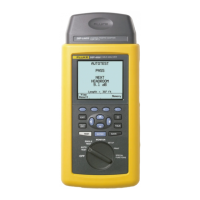
